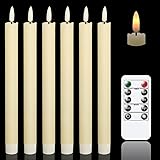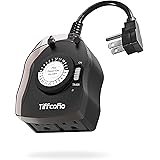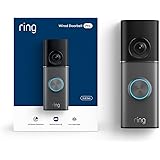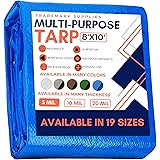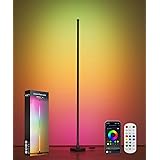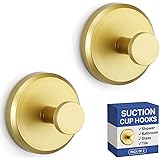Imagine this: You’re miles off the beaten path, the sun is setting, and suddenly, your vehicle sputters to a halt. A loose wire, a minor leak, or a vibrating component—whatever the issue, you know you need to fix it. Panicking, you dig through your gear, rummaging past camping supplies and recovery ropes, only to unearth a bulky, heavy toolbox from the bottom of your rig. It’s exactly what happened to Michael, as he mentioned lugging around a 50 lb box on his trips, making on-trail repairs more frustrating than they need to be. That’s why mastering your *overlanding tool kit* and embracing the efficiency of a tool roll is not just a convenience, it’s a critical component of self-sufficiency on any adventure, as discussed in the video above.
The goal isn’t to carry every single tool imaginable, but rather to curate a compact, effective set of *tool roll essentials* tailored to your specific vehicle and anticipated needs. This guide will expand on the invaluable advice shared by Michael, helping you transform your repair preparedness from a logistical headache into a streamlined system, ready for anything the trail throws your way.
Beyond the Bulky Box: Why a Tool Roll?
For many off-road enthusiasts and overlanders, the traditional metal toolbox seems like the obvious choice for carrying tools. Yet, as Michael highlighted from his own experiences, these boxes often end up buried under other gear, heavy, and disorganized. They take up significant space and can be challenging to access quickly when you’re in a tricky situation. This is where a quality tool roll, often complemented by smaller gear bags, truly shines.
The Advantages of a Compact Overlanding Tool Kit
First, consider the sheer practicality. Tool rolls are designed to be flexible and space-saving. They conform to odd shapes and can be tucked into tighter spaces than a rigid box, making them ideal for rigs with limited storage. Imagine if you could easily access your essential tools without unloading half your vehicle; a tool roll makes this a reality. Furthermore, the compartmentalized design keeps tools organized and visible, eliminating the frustrating search for that one elusive wrench.
“Buy Once, Cry Once”: Investing in Quality Gear
Next, think about durability. Michael emphasizes the “buy once, cry once” philosophy, recommending you invest in the most expensive, high-quality gear you can afford. This wisdom applies not just to the tools themselves but also to the tool roll and bags you choose. Durable materials like waxed canvas, as seen in the Adventure Tool Company products Michael features, offer superior resistance to tears, punctures, and even some weatherproofing. Heavy-duty zippers and robust stitching are non-negotiable, ensuring your gear stands up to the rigors of off-road travel and frequent use.
Building Your Vehicle-Specific Tool Kit: Trim, Don’t Haul
The core principle behind an efficient *overlanding tool kit* is trimming down your inventory. This isn’t about sacrificing preparedness; it’s about intelligent selection. Michael’s example of his Toyota FZJ80 factory toolkit—a lean collection of four wrenches, a spark plug socket, and jack tools—illustrates this perfectly. You need to focus on what your specific vehicle actually requires.
The Golden Rule: Vehicle-Specific Tools
The primary reason for tool kit bulk is often carrying redundant tools. Do you truly need both standard and metric sets if your vehicle is entirely metric (or vice-versa)? Michael swiftly cuts down his kit to only the metric wrenches his FZJ80 needs. This immediately reduces weight and frees up valuable space. Take the time to research your vehicle’s common fasteners and any unique tools required for frequent maintenance or likely trailside repairs.
Assess Your Needs: Basic Fixes vs. Major Repairs
Another crucial step is honestly assessing the scope of repairs you’re willing and able to undertake on the trail. As Michael points out, this basic kit won’t let you “rebuild a starter motor.” It’s designed for getting you off the trail or to the nearest repair shop, not for a full engine overhaul. Focus on common issues: tightening loose bolts, repairing electrical connections, fixing small leaks, or changing a tire. This distinction helps you prioritize truly essential items.
Streamlining Your Socket Collection
Many overlanders accumulate a vast array of sockets, only to have them rattle loosely in a bag. Michael’s suggestion of using socket trees is a game-changer for organizing your trimmed-down socket set. These compact organizers, available for 3/8, 1/4, and 1/2 inch drives, keep your chosen sockets neatly together and easily accessible. Imagine if you could grab the exact socket you need in seconds, without fumbling around—socket trees make it possible, contributing significantly to your organized *tool roll essentials*.
Essential Tools for the Trail: Beyond the Basics
Once you’ve embraced the concept of a compact, vehicle-specific tool roll, it’s time to fill it with the right gear. Michael showcases a thoughtful selection of tools that are indispensable for trailside emergencies, and we can expand on their uses and why they are so effective.
Versatility is Key: The Adjustable Wrench and Beyond
Even with a carefully curated set of open-ended wrenches, you might encounter an unexpected bolt size. This is where an adjustable wrench becomes your best friend. As Michael notes, it’s a “catch-all” tool, ensuring you’re not left without a solution for that one odd size. Beyond wrenches, consider a C-clamp, which can be invaluable for compressing brake calipers, holding parts together for temporary repairs, or even assisting with recovery operations. A good cutting tool, like durable wire cutters or a multi-tool, is also critical for various tasks, from trimming zip ties to cutting bailing wire.
Tackling Electrical Gremlins
Electrical issues are common on the trail, often caused by vibrations or water ingress. Michael’s inclusion of electrical repair tools highlights their importance. A butane-powered soldering iron is brilliant because it doesn’t require an external power source, letting you fix connections anywhere. Paired with a mini torch for heat shrink tubing or other heat-activated repairs, and a wire tester, you have a potent combination to diagnose and fix most electrical problems. These items are fundamental *tool roll essentials* for maintaining your rig’s vital systems.
Ingenious Repair Aids: Duct Tape, Zip Ties, and More
Some of the most effective trailside repairs come from surprisingly simple items. Michael mentions heavy-duty zip ties with wire in them – these are incredibly strong and versatile for temporarily securing components. Heat-activated repair tape, which turns extremely solid, is another innovative solution mentioned, potentially even strong enough to temporarily patch a brake line. And of course, the classic duo of various types of duct tape and bailing wire remain essential for a multitude of quick fixes, from patching holes to securing loose parts. These expendables are small but mighty in any *overlanding tool kit*.
Grease Guns and Heavy-Duty Necessities
Regular maintenance, even on the trail, can prevent bigger issues. If your vehicle has grease fittings, a mini grease gun, as showcased by Michael, is far more compact than a standard one, making it easy to carry with spare cartridges. For more intensive, though less frequent, needs, a hand drill can be a lifesaver. While laborious if hand-powered, it offers the ability to create mounting points or clear seized holes, potentially getting you out of a bind when powered tools aren’t an option. Finally, don’t forget vehicle-specific items like your proper size spark plug remover and a sturdy tire iron, which are specialized yet critical *tool roll essentials*.
Organizing for On-Trail Efficiency
Having the right tools is only half the battle; knowing where they are and accessing them quickly is the other. A well-organized tool roll maximizes efficiency and minimizes frustration, especially when time is of the essence during a trailside repair.
Features of a Quality Tool Roll
When selecting your tool roll and supplementary bags, look for features that enhance usability. Michael points out the large, easy-to-grab zippers with paracord pulls—a small detail that makes a big difference when your hands are dirty or cold. The bright orange interior of his Adventure Tool Company gear is another smart feature, providing contrast against dark tools and making them easier to spot in low light conditions. Ample pockets, pouches, and Velcro patches for custom labeling further contribute to an intuitive and highly functional *overlanding tool kit*.
Practical Organization Tips
One effective strategy is to group similar tools. Electrical repair tools can go in one pouch, general wrenches in another, and expendables like tape and zip ties in their own compartment. Utilizing the multiple pockets and large folding sections of the tool roll, as Michael demonstrates, allows for this kind of systematic arrangement. Remember, the goal is not just to store tools, but to create a system where you can grab exactly what you need with minimal effort, making your *tool roll essentials* truly essential.


